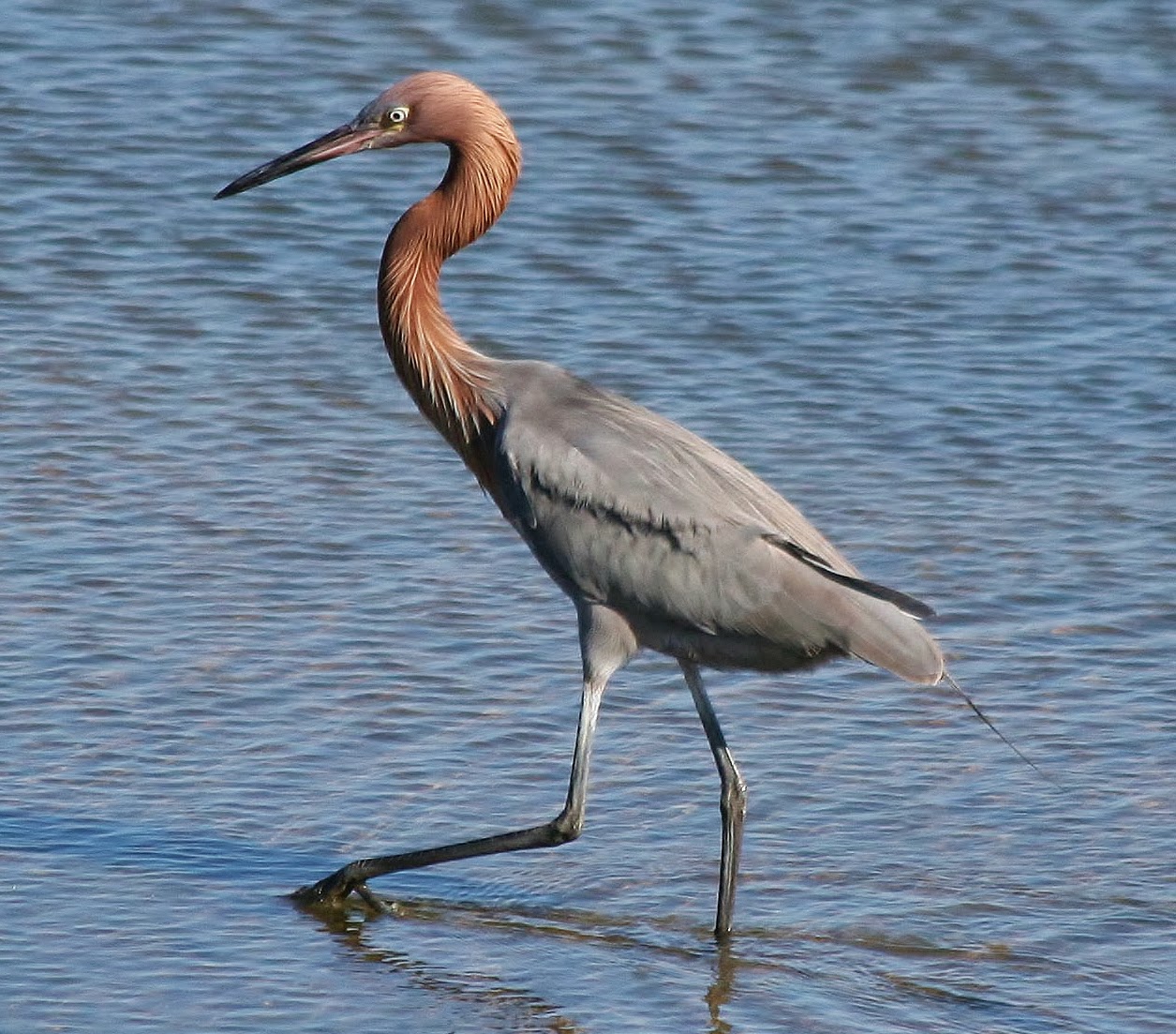 |
| Photo by John Avise (Natural History of Orange County) |
Common name:
reddish egret (en); garça-avermelhada (pt); aigrette roussâtre (fr); garceta rojiza (es); rötelreiher (de)
Taxonomy:
Order Ciconiiformes
Family Ardeidae
Range:
This species is found along the coasts of the southern United States, Mexico, Central America, the Caribbean and into northern Venezuela and Colombia.
Size:
These birds are 68-82 cm long and have a wingspan of 116-125 cm. They weigh 360-870 g.
Habitat:
The reddish egret is found in shallow coastal waters, salt pans, mud and sand flats, rocky shorelines and sandy beaches, breeding on rocky offshore islands and mangroves. They are present from sea level up to an altitude of 50 m.
Diet:
They feed on small fishes, such as minnows, mullet and killifish, frogs, tadpoles, crustaceans and occasionally aquatic insects.
Breeding:
Reddish egrets can breed all year round. They nest in colonies, each pair building a stick platform lined with grass, placed on mangrove trees or on the ground, always near or above water. The female lays 3-4 pale blue-green eggs, which are incubated by both sexes for 25-26 days. The chicks are fed by both parents and fledge 6-7 weeks after hatching. Each pair raises a single brood per year.
Conservation:
IUCN status – NT (Near-Threatened)
This species has a large breeding range and a global population estimated at 10.000-20.000 individuals. The population seems to be declining in most areas, although it is increasing in
in parts of its range where it is well protected and has safe nesting sites. Populations were heavily exploited for until the early 20th century, but today population declines are apparently related with nest predation. Predator control has lead to population recoveries in some areas.







